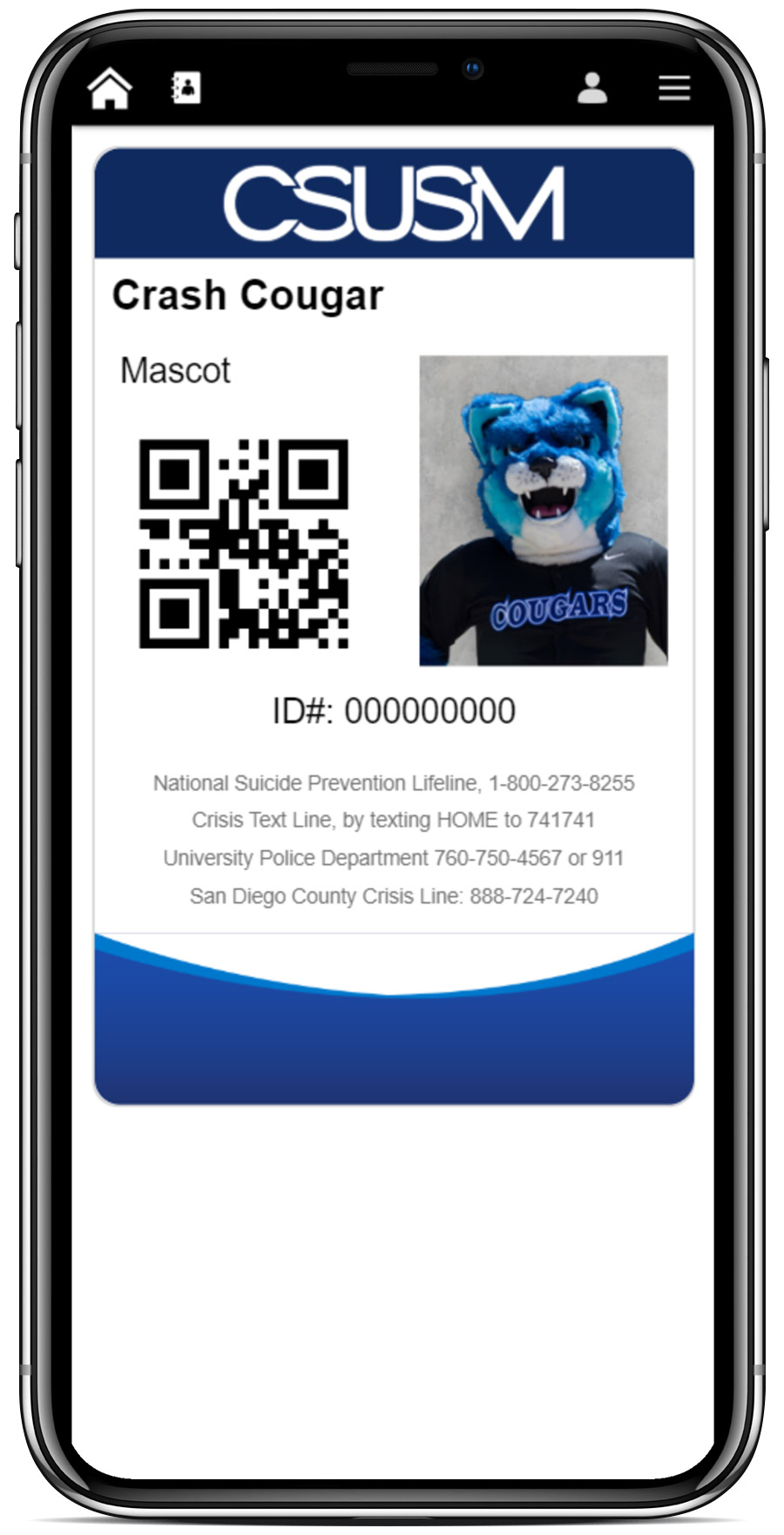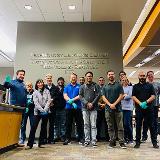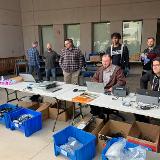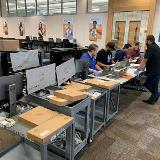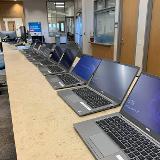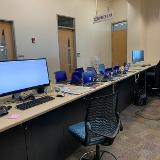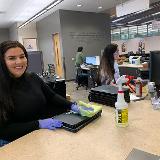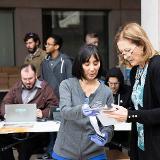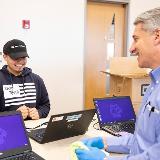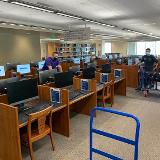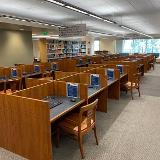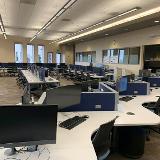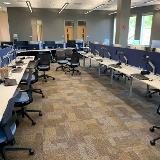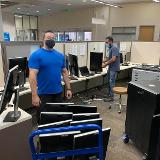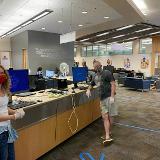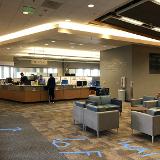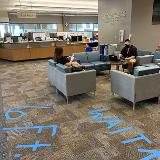 myCSUSM
myCSUSMCSU Tech Conference
CSU Tech Conference
IITS // Spotlights // CSU Tech Conference
Table of Contents
- Repurposing Campus Technology for the Virtual Campus
- IITS Rapidly Adapting to Change
- Teams Helps to Ensure a Smooth Transition
- IITS For You — The Focal Point for Technology Support, Training, and Resources
- Answering the Call for Student Services
- Campus ID Goes Fully Virtual
Repurposing Campus Technology for the Virtual Campus
[ back to top ]
Nothing demonstrates CSUSM’s true spirit and community partnership in 2020 better than the unit’s response to the shift to virtual instruction and other associated spring work environment challenges. For IITS, what started out as a one- or two-day equipment checkout event back on March 16th became weekly distribution days spanning the entirety of the semester. That first week was a challenging yet inspiring time as over 30 IITS employees from all IITS groups directly participated in supporting the effort to provide equipment to the entire campus community on very short notice. (see also CSUSM NewsCenter story - IITS Rises to Challenge Amid COVID-19 Crisis) In the first three days alone, IITS provided over 300 laptops (120 to students) and several hundred other pieces of loaner equipment (webcams, headsets, monitors, keyboards, etc.). Since the beginning of this COVID-19 event no technology request by a member of the campus community has been turned down.
Due to the nature of the event, IITS deployed a unique strategy. Instead of simply buying our way out of the problem—which would have been costly—IITS primarily utilized existing resources wherever they could be found on campus. This strategy included collecting all instructional laptops, reimaging them, and redistributing them for immediate reuse. By the end of the semester, IITS’ effort had included deconstructing our once-pristine student labs to increase availability of equipment for distribution. As the academic year was ending, IITS was exchanging laptops loaned to staff for All-in-One computers previously used in our labs. These returned laptops are in turn refreshed and provided to students (and some faculty) for the summer and fall terms.
While the first days of this event saw the greatest distribution of equipment, the demand continued throughout the duration of the term. In support of this effort, throughout the semester IITS managers went to campus week after week to staff the Help Desk and provide desperately needed help and equipment to students, staff, and faculty who needed these items to teach, serve, and learn, ensuring that the campus community had access to all necessary technology.
The Spring semester’s scope of effort:
- Total Faculty/Staff/Students Assisted – 576 (373 Fac/Staff and 203 Students)
- Total Laptops Loaned Out – 480 (287 Fac/Staff and 193 Students)
- Total Items Loaned Out – 1203
- Total Distribution Days - 12 days over 7 weeks
IITS Rapidly Adapting to Change
[ back to top ]
The COVID-19 environment created numerous new challenges for CSUSM, and the CSU more broadly, that have impacted instruction, student support, campus life, and budget resources. The continued efforts to tackle these challenges have even more clearly highlighted the foundational role of information technology in supporting the operations of an effective, efficient, and innovative physical and virtual campus. (See related story Repurposing Campus Technology for the Virtual Campus)
During spring 2020, the CSUSM campus community looked to IITS for a coordinated and swift response that provided solutions which enabled students, faculty, and staff to make the unplanned shift to virtual. Through equipment loans, technical support, training, and deployment of several new IT solutions, the campus successfully met the new challenges of a distributed and virtual work and learning space. While the long-term implications are impossible to accurately predict, the disruptions initiated this semester will only accelerate the unavoidable and long-term trends towards the digital transformation of instruction and student services.
Examples include:
- Cougar Courses Usage (Learning Management System) - Prior to March 9th, 788 instructors were using Cougar Courses for at least one course. By April 6th, 829 instructors were using Cougar Courses, resulting in an increase of 140 courses.
- Video Conferencing - Between August 2019 and February 2020, CSUSM had 725 active users, 6,059 meetings, and 1,628,252 total meeting minutes. Between March 2020 and mid-June CSUSM had3,218 active users, 49,531 meetings, and 22,312,822 meeting minutes.
- Electronic Signature - Moving beyond paper document processing was a campus priority even prior to the COVID-19 event, but the distributed work environment made this transition even more important. Since the start of the COVID-19 virtual campus in mid-March through to mid-June (2020), there have been 11,981 transactions from 426 unique senders. By comparison, the entire AY18/19 saw 13,158 transactions.
- Microsoft Teams Adoption - At the start of the COVID-19 event in March 2020, 470 teams had been created, which represented 55% of all teams created at CSUSM up until that point. To put the usage in perspective, in early March, Teams’ daily activity was less than 100 group messages, 5ooo individual messages, and less than 20 calls/meetings. Usage peaked in April at an amazing 40,000 group messages, over 368,000 private messages sent, 9,700 calls, and 3,554 meetings!
Teams Helps to Ensure a Smooth Transition
[ back to top ]
CSUSM’s response to the current disruptions highlighted its adaptability as it quickly moved to explore and adopt new service models such as Microsoft Teams. Even prior to the COVID-19 event, CSUSM was piloting Microsoft Teams to provide enhanced virtual services and communications to the campus community. As the campus rapidly shifted to virtual, Teams saw a huge increase in adoption, and IITS provided extensive training to ensure a smooth transition. Units across campus rapidly adopted Teams as a flexible and consolidated mobile platform that has proven more effective than traditional email through its social media style communications, real-time chat, shared files, and virtual meeting spaces.
CSUSM’s flexibility and innovative tendencies were demonstrated by the swift shift to Microsoft Teams. By way of reference, by March 2020 CSUSM had a total of 470 active teams, which represented 55% of all teams created at CSUSM up until that point. To put the usage in perspective, usage prior to COVID-19 was less than 100 group messages, 5ooo individual messages, and less than 20 calls/meetings per month. Campus usage peaked in April, at an amazing 40,000 group messages, over 368,000 private messages sent, 9,700 calls, and 3,554 meetings!
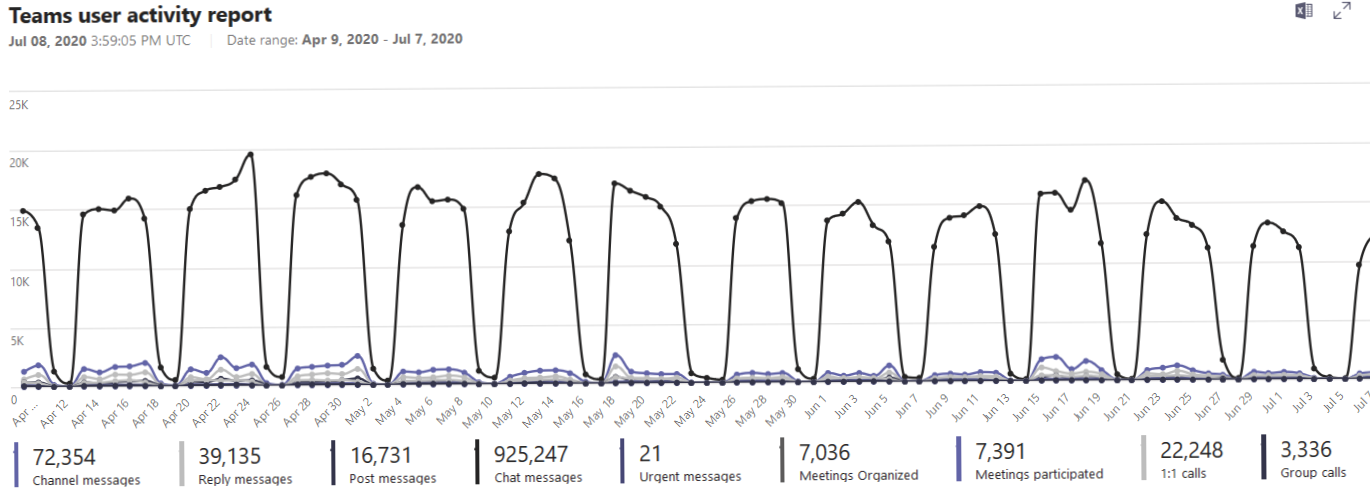
These numbers demonstrate how CSUSM’s shift to Teams has enabled administrative units, committees, and impromptu groups to improve and enhance internal communications through a centralized productivity platform. Administratively, Teams has seen high adoption at the division and department level and has proven to be a very effective tool that enables robust cross-divisional collaborations and a rapid response to changing campus realities. Faculty also adopted Teams, with Academic Senate quickly establishing Teams for all standing committees and for live virtual voting. Additionally, Teams has enabled CSUSM to create virtual spaces for student support— including persistent spaces for virtual advising, virtual tech support, virtual tutoring and Supplemental Instruction—which offer students easier access to services, including through low-bandwidth, chat-based support. Teams has proven to be a valuable platform for CSUSM’s virtual support services, making student support robust, consistent, and consolidated.
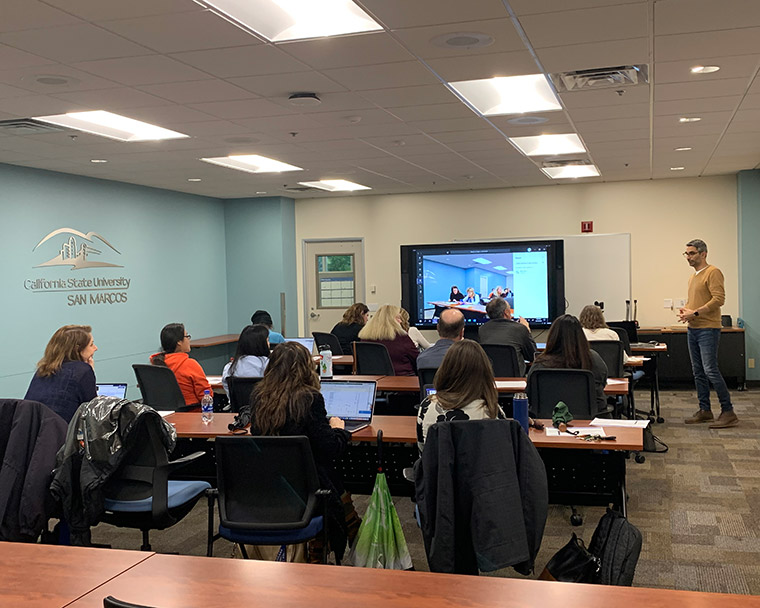
IITS For You — The Focal Point for Technology Support, Training, and Resources
[ back to top ]
The IITS For You (aka it's for you) website is the focal point of IITS support, training, and resources for faculty, students, and staff, and is great place for anyone in the campus community looking among others for:
- ongoing training workshops on virtual instruction, remote communications, and other topics
- guides on important software solutions and services (Cougar Courses, Zoom, Teams, etc.)
- equipment and support
The page is continually updated and expanded, so expect to see even more important content.
In addition to the website, IITS is looking at ways to maximize the number of laptops and other equipment it can loan out to support students, faculty, and staff as well as other ways to support changing campus technological needs.
(posted March 11, 2020)
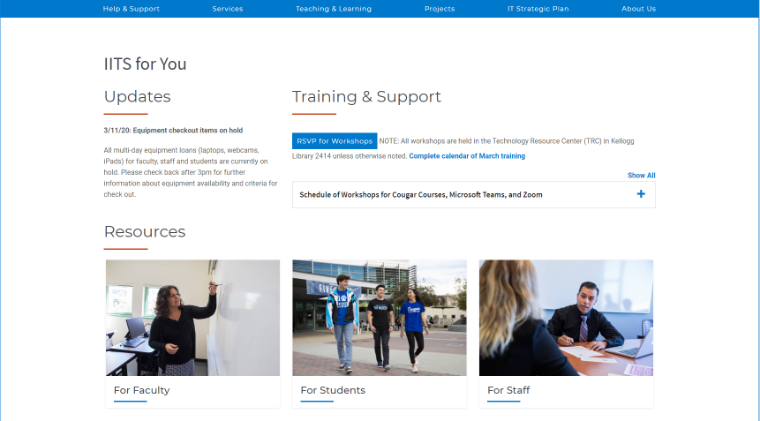
Answering the Call for Student Services
[ back to top ]
Like several other CSUs, CSUSM has relied on a phone system built for a different time and different needs, and the campus’ 20-year-old PointSpan telephone system is now officially obsolete and not supported by the original manufacturer. Given the diminished extension-level usage for the telephone system, two years ago CSUSM set as a priority, though not a high one, to replace the 2,000-extension campus’ phone system. Prior to the COVID-19 incident, only 417 lines had been migrated to the new phone system, Mitel MX-One. These were primarily analog emergency services lines, such as elevators and Blue Lights in the parking lots, IITS and University Police offices, or extensions linked to phone service for the new Extended Learning Building.
During the COVID-19 event, the existing campus phone extensions and their limited capabilities to support a distributed campus highlighted the deficiencies of the obsolete PointSpan phone system and its inability to meet the changing needs of the virtual campus. IITS responded by quickly speeding up the deployment of the Mitel softphone solution and Contact Center functionality. This effort included softphone extensions for campus employees working from home as well as deployment of a full Automated Call Distribution (ACD) system and functionality for Admissions, Financial Aid, Records, Cashiers, Extended Learning, Dean of Students Office (Cougar Care Network), and IITS (Help Desk). By early May, all numbers in Cougar Central (primary student services point of service) were live in the new Contact Center phone services.
These new services include a number of enhancements that benefit students and the CSUSM staff who assist them. They include:
- Virtual Queuing - Virtual Queuing is a key functionality that allows callers to select the option to receive a return call from the University while maintaining their position in queue. During the period of mid-May to mid-June, Cougar Central received 6,580 inbound calls, of which 26% selected to utilize this new campus service.
- Service Efficiencies - End-user enhancements have also been added to help streamline support to students. A time saver for both staff and students is "screen pop", which allows the student's PeopleSoft record to automatically display on the staff member’s screen when the call reaches an agent.
- Call Center Administration - The campus had previously utilized a very basic call queuing system, and the introduction of new capabilities will follow as functional units are able to absorb the operational changes required of more advanced call-handling strategies. This updated system also brings CSUSM supervisors the full call center capabilities they have lacked with real-time queue statistics, including calls-in-queue, abandoned calls, and time-to-answer.
As of mid-June, more than 800 extensions have been moved from the old phone system to the new one, demonstrating once more IITS’ ability to quickly adapt to new realities and produce solutions that enhance student support in a virtual campus.
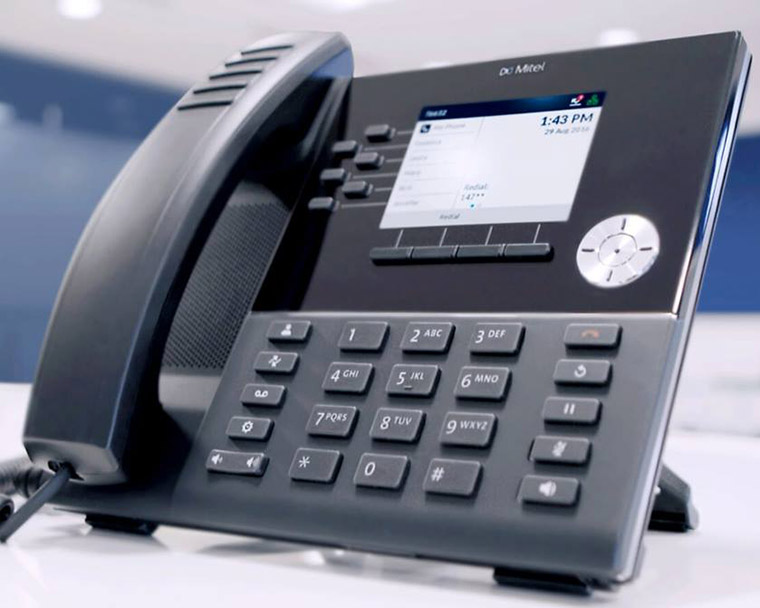
Campus ID Goes Fully Virtual
[ back to top ]
For almost 20 years CSUSM has had intermittent discussions on the need for a campus ID card that could support multiple services, including retail. These discussions became more serious as CSUSM Corporation worked to establish new dining service options on campus. In Fall 2019, IITS received the go-ahead to assume responsibility of the existing Campus ID from the Library and subsequently partnered with CSUSM Corp and Sodexo to deploy a unified ID and retail card.
The original plan and scope included supporting campus ID, student & voluntary meal plans (with CSUSM Corp & Sodexo), and future possibilities to utilize it for student attendance and security-related applications. This card system was to use both Apple Wallet and Google Pay capabilities. This functionality would have limited the need for physical cards and would have deployed a unified platform that can expand beyond the initial dining/retail functions to support attendance tracking and door access (if selected at a future date).
IITS was actively deploying Transact up until the project was put on hold in May 2020 (due to COVID-19). In response to the project hold on Transact, IITS quickly developed an internal system that replaced the need to come to campus for an ID photo. This system enhances our remote service capabilities by allowing students to submit their ID photo via the CSUSM website (campusid.csusm.edu) or the campus app. This integration builds upon the electronic version of the campus Digital ID that was added to the CSUSM App two years ago. (The Digital ID had 34,000 views in Fall 2019.).
To access the digital Campus ID, simply open up the Campus Mobile App and tap on “VIEW ID” from the home screen. Your Campus ID also includes your 9-digit CSUSM ID Number visible for easy access in case you ever forget and need it quickly.
To start using your Campus ID, you need to have a photo on file, as the ID Card services will not work without one. The digital Campus ID is free and you can upload your photo online, or choose to have a physical card printed for a nominal processing fee of $5.
On June 1, 2020, IITS assumed responsibility for ID card operations.
